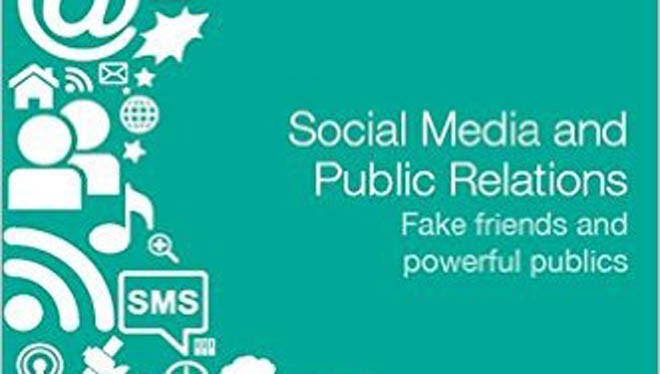
Social Media and Public Relations: Fake Friends and Powerful Publics details social media’s strong impact on public relations and marketing

Social media has become an important part of life for most of the people -- especially the youth who have become more active citizens and social participants because of social media. It provides them a range of benefits and opportunities like maintaining social connections, expressing opinions, sharing their views and achievements; along with being a medium for interaction, information and knowledge seeking, pastime and entertainment, understanding people and enhancing their support networks. They do so many things on social media because of convenience. Extensive use of social media can impact people’s preferences. They may start liking or disliking specific things. It may lead them to build new opinions and change older ones.
Considering the reach of social media, its higher conversation rate (engagement potential) and the facility of instant feedback, we can say that social media has a strong impact on public relations and marketing as well.
Social Media and Public Relations: Fake Friends and Powerful Publics covers all aspects that allow us to understand how public relations functions in this active world. The book examines the role of public relations by exploring various ways that social media is reshaping its strategies, approaches and tactics. Through social media, PR practitioners can now communicate effective and less costly content easily, faster and to a large audience. It provides detailed information about both: the fake and the authentic, the meaningless and the meaningful, the powerless and the powerful audience.
Motion, Heath, and Leitch have done excellent work in the past. Robert L. Heath is Professor Emeritus at the University of Houston, USA. Dr. Heath is an internationally renowned scholar on public relations. He has published over hundred journal articles and many award-winning books, including The SAGE Handbook of Public Relations (2010). Shirley Leitch is Dean and Professor of Communication at the Australian National University, Australia. She has done tremendous work in communication and has made contributions to many publications as a researcher. Judy Motion is a professor of Communication at the University of New South Wales, Australia. She has written on the power of public relations, public engagement processes, organisational change and branding at great length.
The first strength of the book is the extensive research that has gone into writing it. The authors have done a great job in finding and exploring every aspects of the topic over the course of history. They have cited numerous sources, quotations and paragraphs in each chapter of their book to substantiate the arguments effectively and to provide clarity to readers. Social media is developing continuously and usage trends are also changing constantly. Social media itself does not have a long history and managing public relations through social media is also a new concept. Given the fact that the information available on the issue is very limited, writing a book -- researching, understanding and convey all related concepts would have been a challenge.
The second strength is that the book describes not only what to do but what not to do as well. It also seems that the work’s main focus is on preventing PR practitioners from spoiling the image of their organisations because it takes years to develop a good image but a single mistake is sufficient to destroy everything.
The book has twelve sections. Each chapter discusses the topic in detail with lot of references. Chapters have been developed intelligently and provide sufficient information about the emerging popularity of social media and also a historical perspective to help understand the basics. All chapters aid readers in developing a multi-dimensional understanding of current issues, limitations, risks, challenges and opportunities as apart from discussing these from the audience’s perspective, the book can also suffice as a guide for PR professionals interested in exploring the potential of this new form of media.
Another strength of the book is the inclusion of case studies and appropriate examples from history. For example, the campaign against oil companies in America and #Likeagirl campaign by "Always" has been reported as the biggest, most successful and powerful campaigns initiated and operated through social media. Writers included PR cases in each chapter where needed to illustrate the growing power of the online world. By explaining different tools of propagation like Facebook, Twitter and Instagram etc., it enables readers to use them efficiently and effectively.
An obvious weakness of the book is the lack of illustrations or pictures. Pictures of real-time examples allow readers to understand things better. Over-citation means that the authors have just compiled previous ideas into a book and do not have new ideas. That is why they have given references at the end of every chapter.
Comparison with other books from the same field is the toughest part for me. Arguably, every book has some unique and different points that make it worth reading. There are no ratings and reviews on the internet at this time because this book is new in the market.
The book mainly focuses on public relations. It does not talk too much about marketing and so there can not be a direct comparison with many of the best books that deal with the same discipline because most of them depict both phenomena -- marketing and public relations.
Overall, the book is well-written and also goes on to define cultural clash, complexities and tensions between the promotional cultures of public relations and participatory cultures of social media very effectively.
I would like to finish my review by quoting a line from the book, "We believe that communication, through the practice of public relations, can make society more fully functioning, and a better place to live. But we also know that swords have two edges and cut both ways."